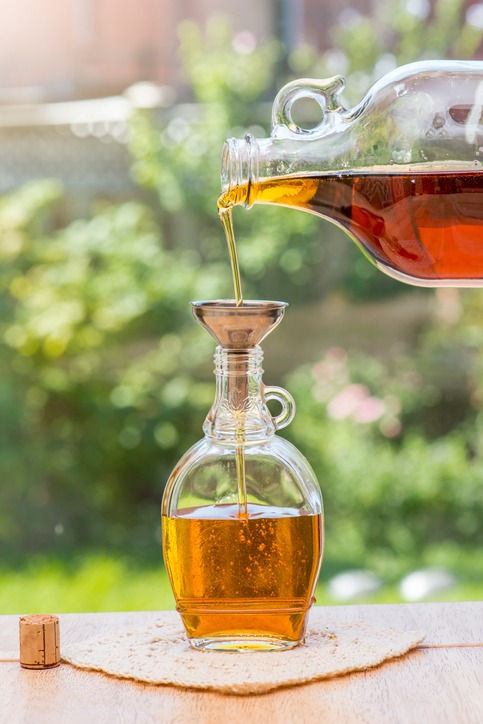Famous worldwide for its quality, maple syrup is a Canadian export. Canada’s flag features the sugar maple leaf, and its products have come to symbolize the country. All the vibrant foliage of a Canadian summer is thanks to the country’s maple trees. History would not be complete in Canada without maple syrup. It offered those with ingenuity the freedom to pursue their own goals and the means to support themselves economically.
The maple industry remains one of Canada’s most important because it gives individuals living in some of the world’s most inaccessible places a chance to make a living. The country’s stringent control system guarantees Canada’s high-quality goods.
Every province, and state is known for something distinctive, a hallmark that helps set it apart from others. It is usually something unique to the area that its citizens take pride in. The creation of the delicious liquid gold known as maple syrup is unquestionably the province of Quebec’s claim to fame. Recently, Quebec has been producing more than 70% of the world’s supply of maple syrup. Maple syrup has been a fundamental component of Quebec’s identity and culture since the province’s earliest days. These customs have their roots deep in the past.
A Sugar Maple
East Canadian hardwood forests are home to sugar maple, commonly called rock maple. Most of the world’s tree species can be found in these regions: Nova Scotia, the western and southern parts of Quebec, central and southern Ontario, and the area stretching to southeastern Manitoba around Lake of the Woods.
Black maple
Due to its close relationship with the more well-known sugar maple, the latter is often included in taxonomic schemes. In southeastern Canada, specifically in southern Ontario, you can find black maple trees.
Red maple
Among these three trees, the red maple is by far the most well-known. Around Lake of the Woods in northeastern Manitoba, you’ll find red maple trees. It extends eastward from Newfoundland and becomes the eastern boundary of Ontario and Minnesota.
The maple belts
The significant number of maple trees can be attributed to the favorable geographic location and climate of four Canadian provinces. The “Maple Belt” includes Ontario, Quebec, New Brunswick, and Nova Scotia Canadian provinces. In this part of Canada, you may find the best maple syrup because of the incredible variety of trees.
Production Process of Maple Syrup
The production of maple-syrup requires careful attention in order to produce the perfect quality to be used by its consumers. Its production usually takes place during the months of February and until April when temperature is above freezing during the day and below freezing at night. The production process of maple syrup includes drilling into the tree to insert a spout that will allow the sap to flow out; then collecting of the sap; boiling of the sap; filtering the syrup for impurities; grading the syrup; and finally, packaging the syrup.
Maple Festivals and Traditions in Canada
Since maple syrup is an iconic product of Canada, communities around the country celebrate the arrival of spring and the sap harvest with maple syrup festivals. One of the popular festivals take place in Montmagny. The said festival has been celebrated for over 60 years and continues to attract thousands of visitors each year. Activities such as music, dancing, food, and demonstration of the traditional maple syrup production techniques are presented in the festival. Other places in Canada that held festivals for maple syrup includes Ontario, Nova Scotia, and British Columbia. Other activities that are common among these festivals are maple syrup tasting and maple taffy on snow. These festivals are commonly held between late February and early April, depending on the weather of the particular region.
Health Benefits of Maple Syrup
The health advantages of pure Canada maple syrup are well-known and appreciated around the world.
- To strengthen your defenses, consume maple syrup packed with vitamins and nutrients. It shields your body from harmful free radicals because of its antioxidant capabilities.
- Zinc, Potassium, Manganese, Thiamine, Calcium, Iron, Magnesium, and Riboflavin are just a few of the essential nutrients that may be found in pure maple syrup.
- Manganese is essential for healthy muscles and aids energy creation. Bones and teeth are both strengthened by calcium.
- However, riboflavin is essential to maintain healthy metabolic activities. The risk of cardiovascular disease can be reduced by consuming magnesium and potassium is necessary for maintaining normal blood pressure.
- Plus, maple syrup is a good source of zinc. Many bodily processes can’t be carried out without sufficient zinc levels.
- It’s excellent for maintaining a robust cardiovascular system. Moreover, it is a vital antioxidant for keeping cells healthy and regenerating damaged ones.
- A quarter cup of high-quality maple syrup provides you with more than 40 percent of your daily intake of zinc and 100 percent of your daily requirement of manganese.
- Maple syrup is a healthy alternative to regular sugar and one of the world’s most widely used goods.
Final Thoughts
You may get a taste of nature with pure Maple syrup. To a certain extent, we can adjust to what consumers want since we constantly listen to their feedback. They know that the amber color grade syrup with a robust flavor accounts for most of the production. They’re giving it to you at this level because that’s what the market generally values most highly. When we sweeten our tea with Canadian maple syrup, we support one of the world’s oldest industries and experience the singularity of a natural product that brings the flavors of Canadian summer into our homes.

